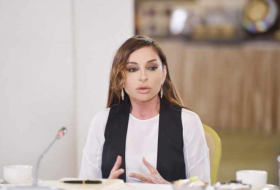Five-year-olds are eating four times their daily sugar limit

This is four times the 19g maximum daily intake advised for their age group.
Sweet drinks, including cans of pop, fruit juice and smoothies, account for 40 per cent of the daily tally, making them a much bigger source of sugar than cakes, sweets or chocolate.
Researcher Peymane Adab, professor of public health at Birmingham University, said that weight for weight, the sugar in fruit juice and smoothies is just as bad for the body as that in soft drinks, and it is wrong to assume they are healthy, just because they contain fruit.
The study presented at the European Obesity Summit in Gothenburg, comes amid growing concern about the damage sugar is doing to health.
Previous research has found that the average five-year-old eats their own weight in sugar each year and the head of the NHS has said should stop consuming fizzy drinks or risk severe illness including cancer and heart disease when they grow up.
British children are among the fattest in Europe, with nearly a quarter already overweight by the age of three and some youngsters’ teeth are so decayed that every single one has to be removed.
Researchers from Birmingham and Leeds universities asked the parents of more than 1,000 five and six-year-olds what their children had eaten in the previous 24 hours.
They then calculated how much ‘free sugar’ was in each item. The term covers all added sugar, as well as sugar in honey and syrups.
It doesn’t include the sugar in whole pieces of fruit but does include fruit juice.
This is because once fruit is juiced, the sugar is released from the cells and acts on the body in the same way as the sugar in fizzy drinks.
The average sugar daily sugar intake was 74.6g – and sugar made up 18 per cent of the typical child’s calories.
NHS guidelines issued last year recommend a maximum of just 19g a day, or five teaspoons of sugar, for children aged between four and six.
A can of Coke contains 35g of sugar – around nine teaspoons, while a Robinson’s Fruit Shoot My-5 drink has around four teaspoons.
A small glass of pure orange juice has a similar amount.
Some 40 per cent of the average child’s free sugar came from sugary drinks, with 25 per cent from fizzy drinks and 15 per cent from smoothies and fruit juice.
Chocolate and sweets accounted for another 10 per cent and yoghurt and fromage frais for 7 per cent.
Professor Adab and colleague Kiya Hurley said that although the children studied were in the West Midlands, there is no reason to believe the figures aren’t typical of the UK as a whole.
The professor said that while parents may be aware of the sugar content of fizzy drinks, they should also realise that smoothies and fruit juice are high in sugar.
And she warned that the consequences of obesity aren’t just physical, with overweight children at risk of bullying and emotional problems.
She urged parents to think of sweet foods and drinks as treats, rather than something their children should automatically have and called on schools to do more, by monitoring the contents of lunchboxes.
Professor Adab also cautioned that it isn’t clear how effective the planned sugar tax on soft drinks will be, saying: ‘There is evidence that it could reduce consumption of sugar-sweetened soft drinks but what we don’t know is whether it will result in people compensating by eating other things that were just as bad for them.’













































